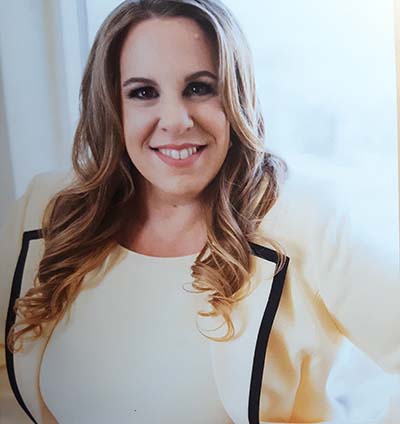B-E-F-A-S-T – Regarding Stroke
Have you noticed, the color red adorns half the store aisles currently, promotions for the next holiday marketing opportunity? How about a different kind of ‘valentine’ for yourself or a loved one this year?
I often attend or listen to presentations on health care, Aging and a multitude of other issues. This is aside from all the political policy ones in which I take part. These days with the aid of zoom and webinars near and far, there are really too many to consider. We have to pick carefully. Frankly, I don’t always. Some are disappointing. Not this one.
I listened to a local neurologist in Southern Oregon named Oscar Sanchez. He gave a practical and pubic-friendly tutorial about something we all worry about – Stroke.
The Types
As usual, no presentation about stoke can leave out the fact that they aren’t all the same. Basically, we can think of them in two categories (and even then, the level of intensity can be vastly dissimilar).
In VERY simple terms, stokes are diagnosed as either:
- Ischemic Stroke. Blood is not getting into the brain cells.
The TIA falls under this category. We’ve all heard the term TIA – transient ischemic attack. The good thing about a TIA (if there is one) is that, as its name implies, it’s usually transient and resolves rather quickly. That IS good indeed. Less upbeat is that it serves as a warning that something is wrong, and there is an uptick of almost 10% for future strokes. - Hemorrhagic Stroke. Blood vessels rupture and bleed (as into the brain). Clots can be a major cause of hemorrhagic stroke. This tends to be a more severe type of stroke and more dangerous.
Luckily these days there are not only medications that help dissolve clotting in hemorrhagic stroking (“clot busting” meds), but other procedures as well. “Mechanical thrombectomy” (procedure used to actually dissolve and remove a clot), is a newer type, which can be performed if the patient is treated within 24 hours.
Mechanisms Involved
No surprise to us, many portions of our body work together. That also means that sometimes one body part not working affects other parts.
In stroke, this can include the heart, such as valve problems, ventricle issues, or irregular heartbeats like A Fib (atrial fibrillation). The aorta and carotid arteries can develop plaquing as can larger and smaller arteries inside our heads.
One sometimes overlooked mechanism is from the aftereffects of COVID and drug use. Drugs like cocaine, meth and heroin (especially IV use) can cause a spike in B/P, and thus Stress on arteries, and thus risk of stroking.
Risks
This is the section that you could probably recite in your Sleep. That is, at least the risks that are “modifiable.”
In a book I once wrote I used a theme that has always stayed with me (although not original with me):
Genetics load the Gun – Environment pulls the trigger.
When it comes to stoke this is fairly on target for that gun. Non-modifiable risks that we have no control over include our age, sex, race and family history.
The risks that are modifiable sound suspiciously similar to avoidance-recommendations we hear for most health conditions. Smoking, physical inactivity, over-weight or obesity are the ones that remain high on the list. However, being delinquent in taking care of other conditions can be a major problem; conditions such as hypertension, high bad lipids, Diabetes, carotid diseases, A Fib, or obstructive sleep conditions. I’ll share Dr. Sanchez’s advice that this means taking your medications for blood pressure or lipid lowering.
What to know – What to do? BEFAST
If you are worried that you – or a loved one – or a stranger – is having a stroke, remember the acronym BE-FAST. Quickly look for these neurological deficits that could be occurring.
Time is Essential
As many neurologists, Dr. Sanchez said THE most important aspect of care for someone having a stroke is time. Think of the ‘T’ for Time as contacting and receiving emergency or hospital care.
“Time is Brain”
“Time is Brain,” he explained is a neurologist’s way of emphasizing HOW important speed is in the recovery from stroke. Every hour, actually every minute, can result in the death of many brain cells. The sooner treatment is received, the sooner that cell destruction can be halted.
“The patient can be stubborn,” Sanchez added. It may be difficult if we are trying to evaluate ourselves, but if you are looking at someone else, realize that they may not think (in their currently disrupted brain) that anything is wrong. Don’t delay. They can be mad at you later if it comes to that. So be it; act anyway.
BE-FAST
Consider the symptoms described in the BE-FAST acronym and most importantly – actually ACT Fast. If a patient is seen within 4-5 hours, they have more treatment options than after that. They also have some others available up to 24 hours (which is sometimes the situation when a person has had a stroke in their sleep).
Try to figure out the last time the person (or you) seemed normal. This is especially important for those who wake up with an apparent stoke. You’ll want to report this time. Still, make this determination while you are already taking action.
Final Thought
Fear of stroke is common (and understandable) among seniors. Living with the side effects can be frustrating and put a big dent in our independence.
Strokes are also one of the top 10 costs to Medicare. Thinking ahead on prevention and quick treatment is not only helpful for a patient, but for our Economy. If we want to age with pizzazz, it’s best to consider all our options.
Perhaps reviewing these factors of BEFAST during ‘Heart ’ month is a more loving preparation than a flowery valentine.
month is a more loving preparation than a flowery valentine.
—
Reference:
See www.heart.org (America Heart Association)
www.stroke.org (American Stroke Association)
—
Title Picture credit: clock and Heart Image by Gerd Altmann from Pixabay
The post B-E-F-A-S-T – Regarding Stroke appeared first on Aging with Pizzazz.

























